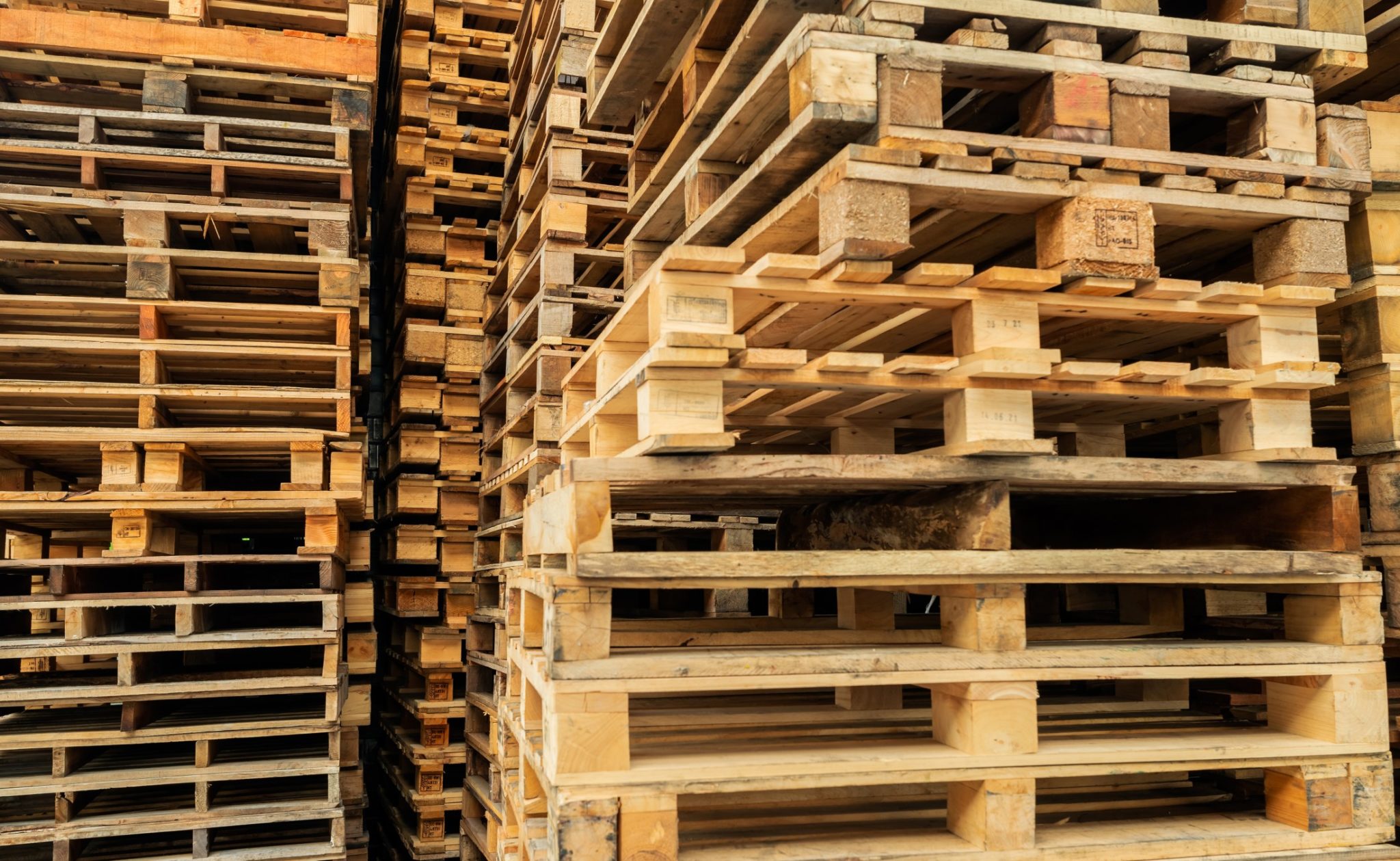
Of all the industries we serve at Rotochopper Inc., one of the largest is the pallet industry. For over 30 years, we’ve set the standard for pallet recycling operations looking to turn wood waste into profitable secondary products. However, before wooden pallets can be processed into mulch, animal bedding, fiber fuel, or the like, they serve an important role in the transportation of goods across the world.
The Life Cycle of Wooden Pallets
Growth and Harvesting
Wood pallets, of course, start out as trees. Most of the lumber used to make pallets comes from tree farms, allowing them to be harvested without endangering our natural resources. Oak and pine are common choices for pallets, but other varieties, including maple, spruce, and cedar, are also used. After they’ve grown to a suitable size, the trees are logged and sent to sawmills, where they become lumber.
Trimming
When pallet manufacturers receive the pallet cants, they are cut to the right length and width, then into deck boards and stringers. Typically, the manufacturer will also cut notches into the stringers, allowing forklifts and pallet jacks to enter and lift the pallets.
Assembly
Before assembly, the wood may be heat treated to protect the pallets from pests, weather, or other things that could cause decay. Then, the pieces are nailed together by hand or machine, and the pallet is ready to be distributed.
Repair
Over the course of the pallet’s service, it’s important for workers to keep an eye out for signs of damage and repair it when possible. New wooden pallets have an average life cycle of about three years, but that can be shortened or extended depending on the care. The life span of a recycled wood pallet is usually shorter, as they don’t have the same level of durability and strength.
Recycling
Once the pallet is no longer repairable, it’s stripped for boards that are still usable or recycled—that’s where we come in. For companies that produce a lot of pallet waste, Rotochopper horizontal grinding equipment provides the opportunity to turn that waste into profit.
With the right equipment, there are a wide variety of secondary products you can produce from pallet waste, including:
- Colored mulch
- Playground chips
- Compost additive
- Boiler fuel
- Biomass feedstock
- Animal bedding
- Wood flour or pulp
The equipment specifics will depend on your business goals, as well as the product you’re looking to produce, but rest assured, Rotochopper can help you find the grinding solutions you need. To learn how you can start a secondary revenue stream for your operation, contact a Rotochopper sales representative today.
